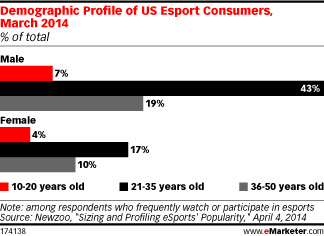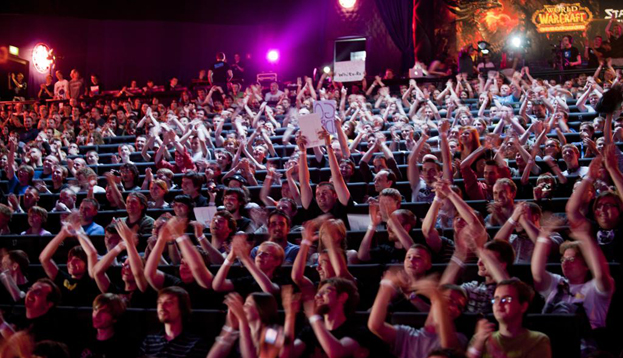
A new report from eMarketer titled “Worlds Collide: Videos and Gaming, and What Marketers Need to Know” shows that gaming-related video’s audience is largely male, but why is this so
While gaming in general has become a mainstream activity with mobile, social and casual gaming appealing with wide demographics, video watchers still tend to be male. eMarketer cites a study by video news site VideoInk that found that Call of Duty, League of Legends, Grand Theft Auto and EA Sports FIFA had audiences of over 90 percent male viewers, sometimes even as high as 98 percent. These audiences skewed young, too, with over 50 percent being between 18 and 24 years of age.
When it comes to YouTube, the proportion does change a bit. As obvious as it sounds, games in genres that typically attract a higher proportion of males tend to attract the same kind of audience on YouTube. Although games like Clash of Clans, Minecraft and Pokémon are attracting more diverse audience due to the broader appeal of the game, they do not comprise the majority of online gaming video.
According to a survey Newzoo back in March, 69 percent of respondents who enjoyed watching and participating in eSports were male and 31 percent female. While eSports has a notable gender gap and is making progress in transforming its reputation as a “boys-only clubhouse,” why then are gaming video watchers so overwhelmingly male After all, 48 percent of online video viewers are female.
Game streaming sites would do well to cast a wider net to appeal to a larger audience just as gaming as an activity has shifted from being viewed as a mostly young male hobby. Now that huge brands are looking to connect with the audience around competitive gaming, opening this pastime to new audiences is key, but important players in eSports and streaming are worried about alienating their audience by incorporating more inclusive practices.
“We are not focused on expanding our demographic beyond who we currently reach because our core audience is growing every year. Historically all attempts to target non-core eSports demographics have been failures. Various companies have tried simplification, gender segregation, mainstream-friendly rule sets and other similar things but does not work. It is not authentic as it alienates the immensely large core audience in the hope that someone new might pick it up. We don’t see the point,” said the programming director, Michal Blicharz of ESL, the largest independent eSports brand to Polygon back in August.

